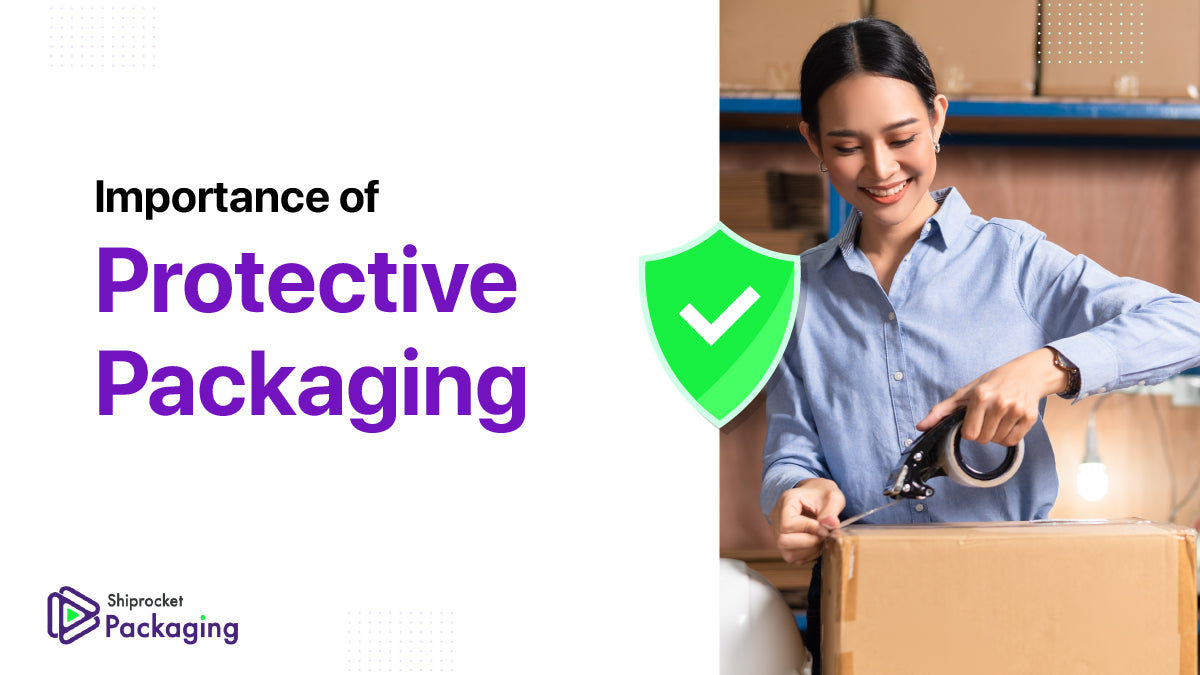Protective packaging is the secondary form of packaging. Protective packaging protects and buffers the product from friction and potential harm during shipping from the manufacturer or warehouse to the end-user. It is generally used for fragile products; however, it can be used for non-fragile.
Protective packaging is made of plastic, cardboard, metal, etc. Some examples of protective packaging can be stretch film rolls, shrink packaging, bagging, bubble wrap, carded packaging, etc.
Importance of Protective Packaging
The following are the benefits of protective packaging:
Pleasant Unboxing Experience
Offering a pleasant unboxing experience is vital for D2C brands. A consumer comes across the product online and cannot touch or feel it. The product photo and description arouse him, leading him to make a purchase. When a consumer finally receives the product, the product packaging is the first obvious touchpoint. And it has to be pleasant.
The product packaging should tell the kind of product, service, and quality you offer. Besides, it should also provide a pleasant unboxing experience. Receiving a product in torn packaging can lead the customers to doubt the quality of products you offer. Thus, packaging plays a crucial role in making the first and most pleasant impact on customers' minds.
That said, protective packaging ensures that the product remains safe and sound during transit. It helps the product survive the rigors of transportation. And when the consumer opens the box, he receives the product just the way he wanted. Protective packaging ensures that the package remained safe and increases the chances of a quality unboxing experience for the consumer.
These days many social media influencers as well make a video or take photos of the unboxing experience of the product. This can offer your company free promotion and advertisement.
Product Deliverance
In an online purchase, the first impression matters the most. Make it pleasant with the help of protective packaging. By this, we mean that when the customer receives the product, protective packaging helps tell the consumer that the package has arrived, instead of ruining the excitement with a damaged good.
Optimizing the consumers' experience can help them retain and purchase from you again.
Environmentally Friendly
The trend of environmentally friendly and biodegradable packaging has grown over the years. Most consumers these days are environment conscious, and they like to buy from sellers who to are environmentally conscious too. Thus, packaging materials like plant-based polymers and biodegradable materials have become the first option for many online sellers.
There are environment-friendly packaging inserts available in the market to help win customers.
Types of Protective Packaging for Shipping
The following are the protective packaging options that you can consider:
Packing Peanuts
Also known as foam peanuts, packing peanuts are foam-based products that resemble a peanut's shape. They are filled in the outer packaging with fragile items. They fill the space in the packaging and surround the product. Generally used with corrugated boxes, packing peanuts can be used with another packaging as well for cushioning effect.
Bubble Bags
Bubble bags are also known as bubble wrap bags and are the most commonly used protective packaging option. They are a kind of bag-like formation with continuous little air-filled sacs that provide cushioning to the products in the packaging. They are available in roll form and folder-shaped form. Apart from offering protection, they can also be used as a packaging option.
Packaging Foam
Packaging foam is another most common protective packaging option. It can be used for various products and be shaped and cut into different forms. When a product is encased in a packaging foam, it is protected better from potential accidents. Though similar to packaging peanuts, packaging foam is much denser and more prominent in size.
It has no definitive shape and comes in different types like sheets, rolls, egg crates, etc.
Packing Paper
Packing paper is a technical paper that is more dense and sturdy than the average paper used for writing. Originally, it is used for storing fish or meat but is being used to protect a variety of packaged goods. It is available in a roll, and kraft and butcher are subtypes.
